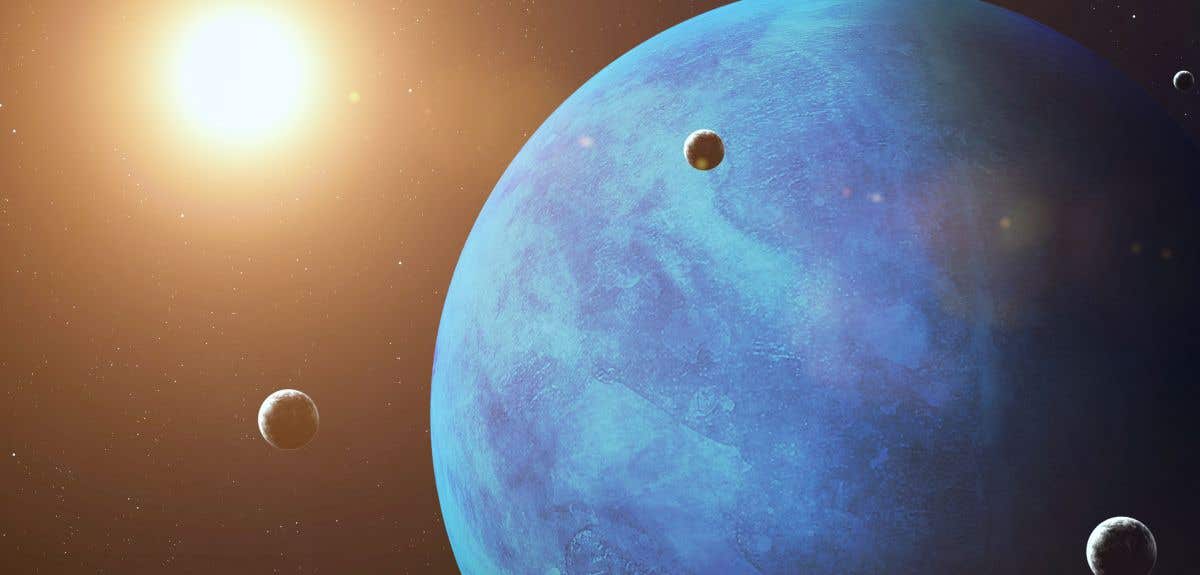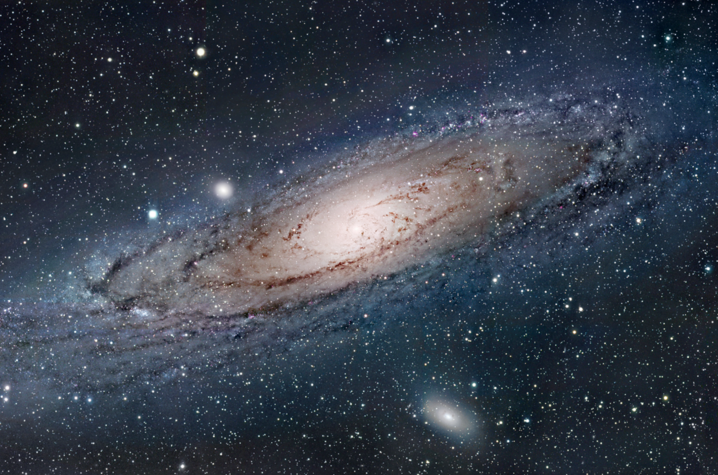Scientists discovered why Neptune’s clouds have recently disappeared
Over the past few years, Neptune, the farthest major planet in our solar system, has been at the center of an intriguing celestial mystery.

[Aug. 24, 2023: Staff Writer, The Brighter Side of News]
Astronomers were baffled by the sudden disappearance of Neptune's ghostly, cirrus-like clouds. (CREDIT: Creative Commons)
Over the past few years, Neptune, the farthest major planet in our solar system, has been at the center of an intriguing celestial mystery. Astronomers were baffled by the sudden disappearance of its ghostly, cirrus-like clouds. A once densely populated veil of clouds was reduced to a mere patch hovering over the planet's south pole. Now, after nearly three decades of painstaking observations, scientists believe they may have finally cracked the code.
Based on extensive data accumulated from three prominent space telescopes, a groundbreaking study published in the scientific journal Icarus has posited that the fluctuation in Neptune's cloud abundance is synchronized with the solar cycle.
"Our analysis of this remarkable data offers the most compelling evidence till date. It appears Neptune's cloud cover has a direct correlation with the Sun’s cycle," expressed senior study author Imke de Pater, an esteemed professor emeritus of astronomy at the University of California, Berkeley. "It seems that when the Sun's ultraviolet rays are sufficiently potent, they may instigate a photochemical reaction, which in turn forms Neptune's distinctive clouds."
Understanding the Solar Cycle
To comprehend this correlation, one must first delve into the intricacies of the solar cycle. In essence, the solar cycle is characterized by the periodic change in solar activities, determined by the sun’s dynamic magnetic fields. This magnetic field, as described by NASA, undergoes a flip every 11 years, reminiscent of a tangled ball of yarn. With increased solar activity comes a barrage of intense ultraviolet radiation throughout the solar system.
Related Stories:
Data sourced from NASA’s Hubble Space Telescope, alongside the W.M. Keck Observatory in Hawaii and the Lick Observatory in California, provided scientists with an observational timeline.
Over a 29-year period, they witnessed 2.5 cycles of cloud activity on Neptune. Interestingly, Neptune's reflectivity surged in 2002, only to wane in 2007. A subsequent brightness was observed in 2015, preceding a stark dimming in 2020 – a period during which the majority of its cloud cover vanished.
Reflecting on the recent observations, Erandi Chavez, the study's lead author and a doctoral student at the Center for Astrophysics, Harvard & Smithsonian, remarked, "The images from this past June, four years post the initial observation, still reveal a significant deficit in cloud cover."
These images show the waxing and waning of Neptune's cloud cover on Neptune. The number of clouds increasingly grows following a peak in the solar cycle. (CREDIT: NASA, ESA, Erandi Chavez (UC Berkeley), Imke de Pater (UC Berkeley))
Chavez further added, "What makes these findings particularly riveting is the sheer scale of this diminished cloud activity. Compared to previous records, this period of low cloud activity has been unprecedentedly dramatic and prolonged."
The Surprising Correlation
The research unearthed another startling revelation. Two years post the peak of a solar cycle, Neptune exhibited a proliferation in cloud cover. The abundance of these clouds directly impacted Neptune’s brightness due to the reflection of sunlight. This discovery left many planetary scientists perplexed, given that Neptune, situated a staggering 2.5 billion miles away, receives sunlight at merely 0.1% of the intensity that Earth does. This insight also refutes previously held beliefs about Neptune’s clouds being influenced by its 40-year-long seasons.
The Great Dark Spot (also known as GDS-89) is the name given to a series of dark spots on Neptune similar in appearance to Jupiter's Great Red Spot. The first one was observed in 1989 by NASA's Voyager 2 probe. (CREDIT: NASA, ESA)
An external perspective on these revelations came from Patrick Irwin, a professor of planetary physics at the University of Oxford, who applauded the research. "This paper is an embodiment of meticulous detective work. By encompassing a longer timeframe than prior studies, it presents a compelling case for the correlation between Neptune’s cloud cover and solar UV brightness."
However, a lingering question remains – why the two-year lag between the solar cycle's zenith and the proliferation of Neptune's clouds? The research suggests that the delay might be attributed to intricate photochemical reactions occurring in Neptune's upper atmosphere, which require time to manifest as clouds.
According to Irwin, the interplay between heightened solar brightness and cloud genesis might be ascribed to the production of ionized molecules. These molecules play a pivotal role as cloud condensation nuclei, initiating condensation processes.
Co-author Carlos Alvarez, a staff astronomer at Keck Observatory, reflected on the marvel of modern technology. "It's astonishing how we can employ Earth-based telescopes to decipher the climatic patterns of a world billions of miles away. Cutting-edge technology and observational techniques have facilitated us in honing Neptune’s atmospheric models. This is instrumental in understanding the relationship between Neptune’s climate and the solar cycle."
Yet, the enigma of Neptune's clouds remains only partially unraveled. The research team continues to monitor potential changes, especially since surges in UV light might further obscure Neptune’s cloud cover. Moreover, storms rising from Neptune’s deep atmosphere add another layer of complexity. These disturbances influence cloud cover but are unrelated to upper atmospheric clouds, which might disrupt findings related to the solar cycle's impact.
The significance of this research extends beyond Neptune. It offers valuable insights into exoplanets—planets beyond our solar system—which are believed to share characteristics with the ice giant.
NASA believes this endeavor could enhance our understanding of not only Neptune but also the myriad exoplanets lurking in the vast expanse of the universe. Echoing this sentiment, Irwin emphasized the necessity of continued planetary monitoring. "To truly grasp these periodic variations, it's imperative to observe these planets at regular intervals. Only through consistent monitoring can we accumulate a reliable dataset."
In essence, the skies above continue to perplex and intrigue. As scientists venture further into the cosmic abyss, the ever-evolving narrative of our universe promises endless wonder and discovery.
For more science and technology stories check out our New Discoveries section at The Brighter Side of News.
Note: Materials provided above by the The Brighter Side of News. Content may be edited for style and length.
Like these kind of feel good stories? Get the Brighter Side of News' newsletter.



